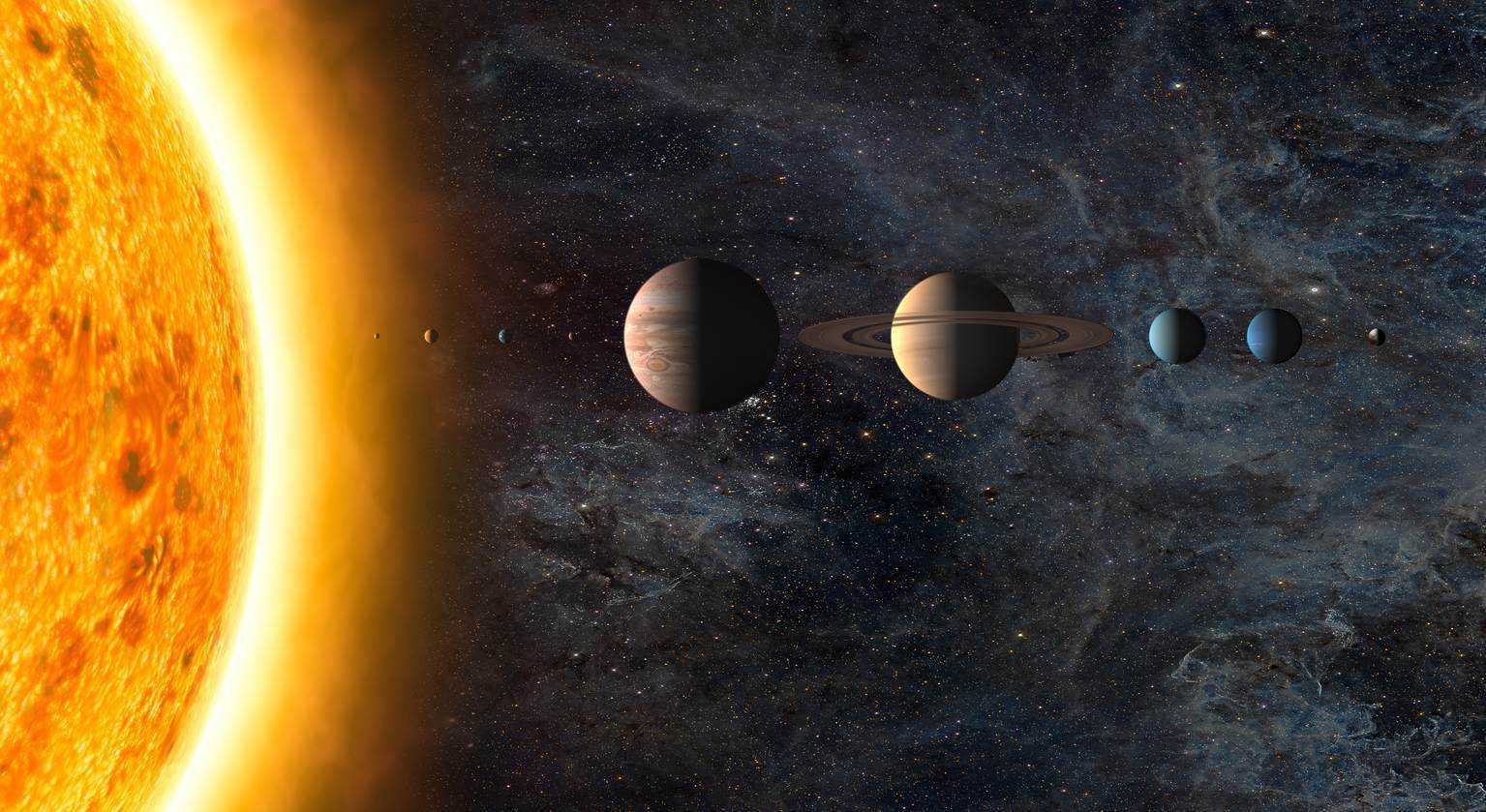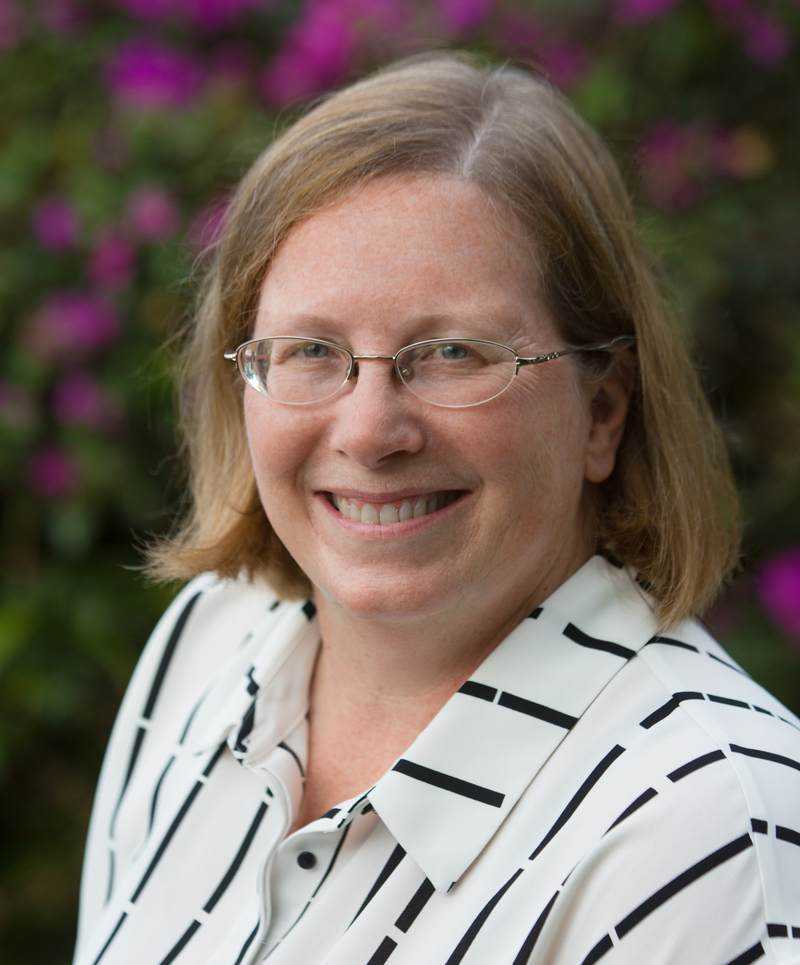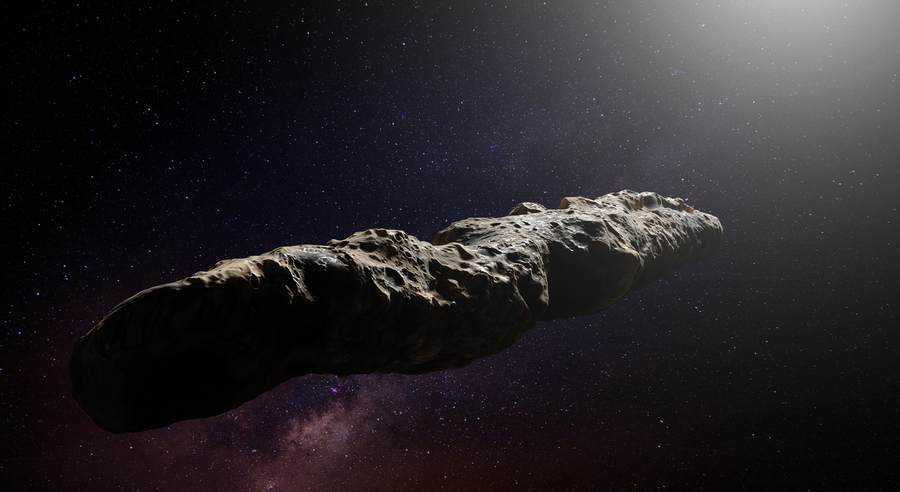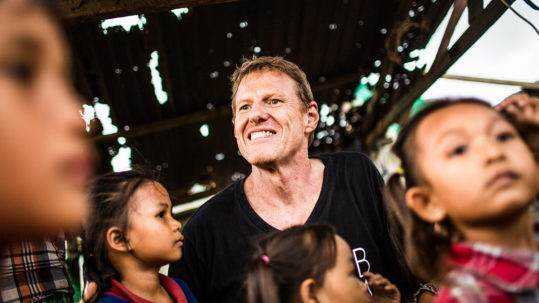
10 Dec Dr. Karen J. Meech
Royalty Free Photo.
Dr. Karen J. Meech
Dr. Karen J. Meech is an astrobiologist and astronomer at the Institute for Astronomy at the University of Hawaii. She specializes in planetary astronomy, focusing on the study of distant comets and their relation to the early solar system. Throughout her career, she has received numerous distinctions, including the Annie J. Cannon Award in Astronomy in 1988, the American Astronomical Society’s H. C. Urey Prize in 1994, William Tylor Olcott Distinguished Service Award of the AAVSO in 2009, and Arcs Scientist of the year in 2018, to name a few. The outer main-belt asteroid 4367 Meech, which was discovered by Schelte Bus in 1981, was named after her. Because of the nature of the projects she aims to develop, Dr. Meech travels the world and has been involved in important astronomy programs and space missions such as the Deep Impact mission and the NASA Discovery missions EPOXI and Stardust-NExT. On October 21st, 2017, she received the phone call every astronomer dreams about: Pan-STARRS had discovered ‘Oumuamua, the very first visitor from another solar system.
By Victoria Adelaide | Dec 10. 2018
Website: UHIFA

Photo by luciexyz.com
Victoria Adelaide: On October 2017, you got the phone call astronomers dream about. NASA had spotted ‘Oumuamua, the very first visitor from another solar system. Can you tell us about that, as well as what ‘Oumuamua stands for?
Dr. Karen J. Meech: We asked some local Hawaiians to suggest a name. They came up with ‘Oumuamua, which means “messenger or distant scout from afar reaching out to us.” We thought this was a nice name for the first interstellar visitor discovered in our solar system. I had just returned from our main annual meeting on planetary sciences on October 21st, 2017. I had been working around the clock for months without a day off, so I was looking forward to doing absolutely nothing on Sunday. That’s when the PI (principal investigator) of the Pan-STARRS survey called me at home and said, “Karen, I think the object that we discovered on October 19th looks like it has an orbit; that means it’s coming from outside the solar system.” At first, I thought, “Did this have to happen today, on Sunday?” (laughs) But then I got excited! We had to move very quickly on this before other people found out about it. We needed to get telescope time so we could put as many telescopes as possible on it to understand what it was, as these things move very quickly with respect to the earth and the sun. Because they shine as a result of light that’s reflected from their surface, the further away they get from you, the fainter they become. We knew that we had less than a couple of weeks to observe this object. The normal process for getting telescope time for a science program can take months. We had to scramble to make special requests to all the observatory directors for the telescope time.
VA: Do you know where ‘Oumuamua came from?
KJM: No, we don’t. It came from the direction of the constellation Lyra. At first, people were excited because there is a star there that has a debris disk, which is the leftover rocky remnants of planet building—so it’s a young solar system; it’s just forming. People thought maybe this is some debris that was kicked out of that young solar system. That was the initial reaction. However, we started thinking about it, using our knowledge that the galaxy is like a giant pinwheel but is not a solid body; it is individual stars orbiting around the center, and they’re going in and out of those spiral arms, so everything is moving. The point at which ‘Oumuamua would have been, where that young planetary system is today, that star wouldn’t have been there. Therefore, this couldn’t be its home. That’s one of the parts of the research that we tried to explore with the Hubble Space Telescope data because this gives us the ability to see it when it’s extremely faint and make precise position measurements. Also, this gives us a longer piece of its pathway, which means that we know its orbit much more accurately, so we were hoping to be able to trace it back to its home. A paper just came out a few weeks ago. We found four stars that were possibilities, meaning ‘Oumuamua passed close enough to those star systems that it could have worked out. The only problem was its velocity while passing those star systems; its speed was too fast. The physics doesn’t work out for kicking things out of those solar systems at those velocities. That means we don’t know. Part of the experiment that enabled us to do this was that there was a satellite in space that was making very precise measurements of stars and their motions, and they just released a lot of their data. Over the next coming years, they will continue making measurements and we’ll have better accuracy concerning the stars. Therefore, we can go back and redo the experiment in a few years because then the precision will be good enough to go farther out and farther back in time. Who knows, we may discover its homeworld, but my guess is that we won’t because space is huge. I think we just have to be ready for the next interstellar object that comes through.
VA: What did ‘Oumuamua teach us?
KJM: I think what’s exciting is this is a natural object that represents a piece of material that was kicked out of another solar system. Most of the scientists believe that it was kicked out during the growth and birth of a planetary system. The way a young solar system starts to form is that it initially is a cloud of gas and dust that slowly begins to collapse and, as things get denser and denser, the little tiny dust grains start to coagulate. They become centimeter-sized pebbles and they get bigger and bigger until they become building blocks of the planets. There are millions of these things in a young solar system, but as the giant planets start to grow, they have enough gravitational influence that as some of the smaller pieces get close enough to them, they can throw them out of the solar system completely. We think that’s what ‘Oumuamua is. We are probably decades from studying that kind of detail on another solar system with our current technology, but here we had something delivered to us so that we could study it up close. This allows us to start to understand and wonder: is the process of building planets the same everywhere? Are the chemical ingredients in their distribution in the young solar system the same everywhere? How did our solar system form? How did we make a world that was just right for humans? We got a sample we didn’t expect to get. It’s the difference between bringing Apollo samples from the moon and just studying it from your backyard telescope.

Interstellar object ‘Oumuamua – Royalty Free Photo.
VA: What’s your view on humans settling on Mars?
KJM: I think it will be fascinating and, of course, that’s what got me into astronomy in the first place. I’d love to be the person who goes to Mars but I think, at this point, I’m too old and we’re still very far off. Despite what people say, they’ve got a huge problem concerning radiation. They have to figure out how to handle that to get people there safely. Nevertheless, I believe that is going to be the future. Humans as a species have always explored. I think that space will be a wonderful place for resources both from solar power, in addition to a lot of other resources that we can get from asteroids and elsewhere. I will be tremendously excited to see people move out into space—it’s inevitable.
VA: If we are currently preparing and almost ready to send humankind to other planets, starting by colonizing Mars, that raises a question: would it be possible that the human race was actually brought to Earth from another world?
KJM: That’s very interesting and it also falls into this idea of planetary protection. One thing that people are anxious about is: do we have a right to put humans on another world? What if there is already biology there? That would disrupt that system. Do we have a right to perhaps destroy an ecosystem? Of course, we don’t yet have evidence of microbes anywhere else in the solar system. Interestingly, Mars, at one point in its distant past, was much warmer and had extensive liquid on its surface. We know now that there are organics on Mars. All the ingredients suitable for life were there. The question is: could life have started on Mars? Also, if it did, it is much easier for material from Mars to hit Earth than vice versa. All the time, there are things such as space debris that impacts worlds and then that knocks off bits of material. That’s where we get our meteorites from and we certainly have, in our collection on Earth, meteorites that we know are from Mars. We have direct evidence that rocks from Mars got kicked off and landed on Earth. Suppose early on, life could have started on Mars, perhaps even at the same time as Earth and you knock some of those rocks off and they make their way to Earth. We could be Martians and not even realize it.
VA: Besides Earth and Mars, are there planets that could be potential candidates for human habitation?
KJM: Well, Mars is the easiest. There are several things we have to consider. We need a good source of energy. Solar energy is one possibility; so, the closer to the sun we are, the better. We also need access to resources such as water, building materials for our colony, as well as nitrogen and other compounds for agriculture; so Mars is the best place. The moon has also been talked about, but there isn’t any atmosphere whatsoever. It’s also much smaller; it has about 1/6 of Earth’s gravity where Mars has about 40%. As humans, we need to live in an environment with gravity. Others have talked about having free-floating colonies in space where it’s possible to create artificial gravity. Scientifically, some of the moons of Jupiter would be fascinating to explore, but the problem with them is Jupiter has a tremendously large magnetic field that traps all sorts of high-energy particles, which creates a very hazardous radiation environment. Therefore, I don’t think that one would ever entertain colonies on Jupiter’s moons. Venus is a non-starter because its atmospheric pressure is intense. Its oceans that it once had have all evaporated into the atmosphere. The temperature at the surface is seven hundred or eight hundred degrees, so that is a world that is too hostile to think of ever colonizing. Mercury has no atmosphere and it’s very close to the sun. For the time being, I think Mars is the world we would think about unless we consider free-floating colonies that we place at some spot in the solar system—maybe in the asteroid belt, because the asteroids themselves would provide a lot of resources. We could mine them for water, which can be broken apart into oxygen, which has obvious benefits for life. That’s also good rocket fuel that provides energy, as well as water and oxygen.
VA: If for life to subsist certain conditions are required, is global warming a real threat?
KJM: Earth’s climate is a very complex system with a lot of feedback, and that makes it very difficult to predict what will happen. In the scientific world, everybody agrees that global warming is real and is a serious problem; there is a component that’s not man-made and there is a significant component that is man-made. Where there is some disagreement is where we’re at now. I know some very well-respected scientists, who are experts in this field, who say that right now we have gone too far and we are on an irreversible path to catastrophic global warming. In contrast, there are others who say there’s still a chance to fix it, but it’s going to require some drastic measures in terms of cutting our greenhouse gases. If you want to see what the catastrophic end state is if we do nothing, you might look towards Venus. Venus is about the same size as Earth, and early in the solar system’s history, the sun was not as hot. Venus also probably had liquid oceans of water but, as the sun heated up, the temperature rose on Venus and the water started to evaporate. We worry about greenhouse gases, such as carbon dioxide and other gases on our world, but water is also a greenhouse gas although not as strong. However, as water started evaporating from Venus’ oceans, it created feedback—you have more greenhouse gases in the atmosphere, they heat up quickly, which evaporates the oceans even faster, and we can see the end state of the catastrophe on Venus. No oceans, the atmospheric pressure is intense at the surface at about the level of 300 feet beneath the ocean floor, there are all sorts of terrible acids and nasty compounds in the atmosphere, and it’s incredibly hot. It’s hot enough to melt low-temperature metals, such as zinc and lead on the surface. That is an extreme example of what could end up here if we don’t pay attention to these feedback cycles in the climate. We can already see significant climate changes on Earth. It’s something that people need to take seriously. That’s part of the point of planetary exploration; we can see what’s happened on other worlds, in particular on Venus. As I said, some scientists think we’re beyond the point where we can do anything about it. This, of course, won’t happen in our lifetime but for future generations, we’re creating a mess.
VA:Would it be the reason why we plan to establish humanity on another planet, just in case our current environment becomes too hostile to maintain life as we know it?
KJM: That’s one thought, but we are so far from being able to move a good fraction of the population anywhere else. Even if Elon Musk and other private individuals manage to start sending humans to Mars, we may be a few hundred years away from putting any sizable population there—and we have to fix Earth right now. Eventually, if we’ve been irresponsible enough to create problems in our world, moving to a new one won’t necessarily solve the problem because we might do the same thing in the future. However, I do see it as a possible way that could help save things.
VA: Do you think there might be a form of alien intelligence somewhere else?
KJM: Yes, I do, because the universe is so vast. Looking from the astrobiology perspectives, life on Earth started early—just about as soon as it could. The more we learn about the origin of life, the more we realize it may be a likely outcome any time you have the right ingredients. However, if you look at the history of life on Earth, let’s say you put it on a twelve-hour clock, up until four o’clock it was just a world of microorganisms, from four to five o’clock that’s the era of plants coming onto land and animals and creatures in the sea, then after five o’clock until about ten o’clock this will be a world of only microorganisms again. So, in fact, our planet is in its late middle ages in terms of life on the surface. Then from ten o’clock until about midnight, the world will be completely desolate, devoid of life as the sun is running out of its nuclear fuel in the center and its outer atmosphere is expanding. The point is that our world has had big life for only a small slice of its existence and the portion of that which has had technology is even smaller. I think life is presumably abundant everywhere; the most common form is likely going to be microbial life. In addition, the distances are so vast that unless other civilizations have developed both a means of crossing those distances quickly and the desire to do so, plus the energy capability, I don’t know if we’ll see alien intelligence in our lifetime. Of course, like many, I would love to do so.
VA: What are you working on right now?
KJM: I’m working on developing a space mission. Our idea is to figure out how Earth got its water, where Earth’s oceans came from, and how do you build a planet that could be suitable for life. We think some of the clues come from water in the asteroid belt. The mission that we’re proposing is to send a spacecraft to the outer asteroid belt and explore the water there to see if it can give us clues as to how Earth got its water and how it formed.
VA: What’s the most rewarding aspect of your profession?
KJM: I think the most rewarding thing about a field like this is that it’s not just a job. I can do anything I want. If I imagine some projects, it’s just up to me to write a case that’s compelling enough for me to get funding to do it; who else has a job where you get paid to do exciting adventurous research that gets at the fundamental questions that everybody has. (smiles)
...our planet is in its late middle ages in terms of life on the surface.``




